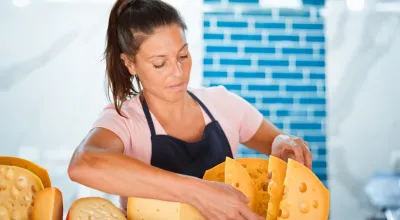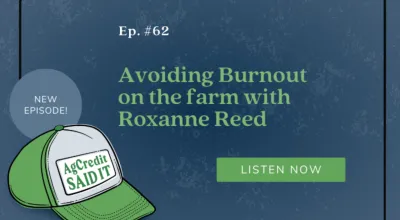
What are year-end balance sheets and how to build them with Credit Analyst Joel Althauser
Finances and record keeping. They’re not the most exciting parts of farming, but they are powerful pieces you need for a successful loan approval.
Here’s a glance at this episode:
- [2:03] Our guest, Joel Althauser introduces himself and his background in agriculture.
- [3:24] In Joel’s role as a credit analyst for AgCredit, he describes his job as analyzing borrowers’ financial information so that they can make sound loan decisions.
- [4:02] Credit analysts, or underwriters, look at balance sheets, tax returns and earning statements to determine best investments for their account officers’ clients.
- [4:32] For beginning or starting farmers, one of the best ways to begin record keeping is by creating a balance sheet and having a measure of your earnings, or tax returns.
- [5:42] Balance sheets have two major sections: 1) Assets - what you own, such as cash, equipment, retirement accounts, etc. and 2) Liabilities - what you owe, such as loans.
- [10:23] On the balance sheet, Joel looks for time and term. In other words, current assets and liabilities with a 12-month life or less, and long-term assets and liabilities. This helps paint a picture of the financial health of your operation.
- [12:13] Balance sheets also help measure how strong the capital is in your operations. The difference between your current assets and current liabilities is called capital margin. This is the capital you have available to meet immediate needs that you may not have planned for.
- [15:19] It may be human nature to not want to show every dollar you have saved on your balance sheet, but in reality, you don’t want to leave anything off. Showing your total assets allows your account officer and credit analyst to see your character, or in other words, how you acquire your assets and what you do with your earnings so that they can give you credit for all of your assets.
- [18:00] You might often hear an account officer talk about a “12/31 year-end balance sheet”. This is particularly important because your balance sheet should match your tax return that gets completed based on the year that just ended.
- [26:39] One of the best ways to make sure that your balance sheet is accurate, especially when valuing your equipment and vehicles, is to value these assets at current market value. AgCredit has various tools available to help you look at marketplace value, specifically the Farm Service Agency’s pricing metrics.
- [33:39] Joel shares personally how he has used a balance sheet within his farming operation to make a purchasing decision.
- [37:49] As we approach the end of the year, Joel’s best tips for success are to begin to make notes for yourself as you go through the year so that you can simplify completing your balance sheet when the time approaches, and don’t be afraid to reach out to your account officer to meet for breakfast or lunch and go over your balance sheet.
Connect with AgCredit:
Facebook https://www.facebook.com/agcredit
Twitter https://twitter.com/agcredit
Instagram https://www.instagram.com/agcreditaca/
Share questions and topic ideas with us:
Email podcast@agcredit.net
Bios:
Host: Phil Young
Phil is an account officer for AgCredit serving Van Wert County. He’s been in ag lending for over three years but his agricultural background goes back much farther. He grew up on his family’s farm where his father raised a large herd of sheep. Currently, he helps with the family farm raising corn, soybeans and wheat. Phil likes working at AgCredit because he can help people achieve their dreams. Whether that is purchasing a new piece of farm ground, updating a piece of equipment, or helping a borrower understand their financials, helping his clients succeed is always his goal.
Host: Brenna Finnegan
Brenna has been an account officer serving Lorain County for three years. She’s worked in the agricultural industry for over 16 years with experience in livestock production, specialty crop production, seed production and processing/distribution. She grew up on a small family farm raising row crops and cattle. She currently has her own herd of beef cattle that she breeds and sells as show stock calves for 4-H and FFA members. At AgCredit, Brenna enjoys being able to work directly with the local farmers and especially helping young farmers achieve something that they didn’t think they could.
Guest: Joel Althauser
Joel is currently the Credit Analyst Manager for AgCredit. As the Credit Analyst Manger, he manages a team of credit analysts and handles analyzing data for several branch offices. Outside of AgCredit, Joel farms his family’s ground raising a few hundred acres of corn and soybeans. He enjoys having his small farm because it keeps him grounded in what he does here at AgCredit.

























